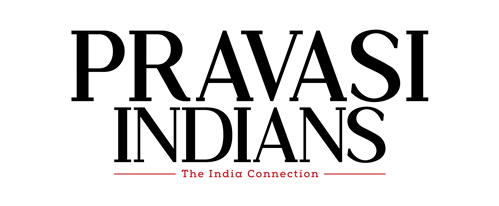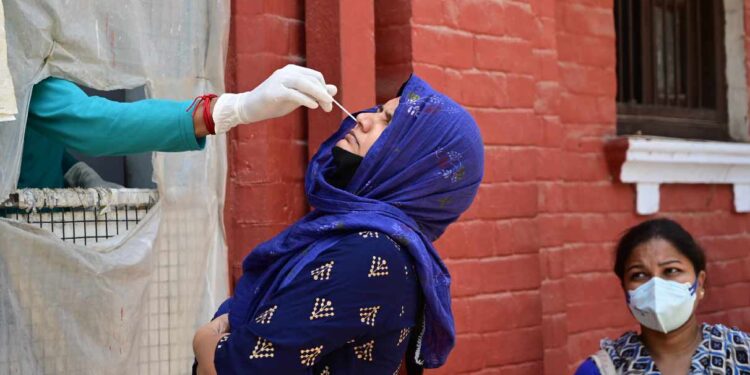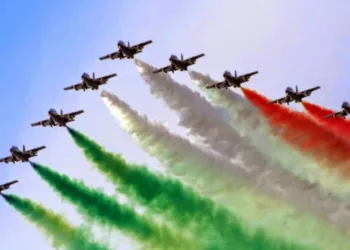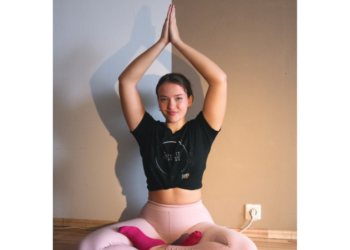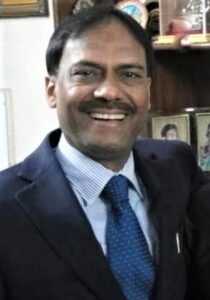
If India has to successfully overcome any healthcare emergency, we need a pre-emptive, comprehensive, well-coordinated and holistic healthcare at all levels – primary, secondary and tertiary care. Healthcare system of the country needs to be regulated by Clinical Establishments Act in letter and spirit.
By Dr Jagdish Prasad
The first case of corona virus disease of 2019 (COVID-19) in India was reported on January 30, 2020. Countrywide lockdown was announced on March 25, 2020 due to upsurge in pandemic cases. By May 2020, five cities (Mumbai, Delhi, Ahmedabad, Chennai and Thane) accounted for half of the cases. Infection rate started to drop from mid-September 2020 along with the number of new and active cases. In September 2020, new cases per day were 90,000 and by January 2021, it dropped down to 15,000.
Ignoring the signals
In several countries like UK and Brazil, a second wave had already come and the same was expected to hit India. Also, there was a report of mutation of viruses at different places in the country. We probably ignored the earlier warnings and naturally there was no preparedness in India. It was assumed that we have beaten COVID-19 due to decreasing cases in the last few months. It was also assumed that herd immunity has been achieved although only 21% of population was assumed to have antibodies against COVID-19 as per ICMR report. Herd immunity is considered when a certain percentage of people becomes immune to infection either by getting the infection or by vaccination. What is the magic figure for herd immunity is not well defined and how long this immunity will last is also not known. Ideally, we will achieve herd immunity as more people around the world receive vaccination that will confer lasting immunity.

Reasons for intensification of second wave
There was a sudden exponential rise in new COVID-19 cases from March 2021 marking the onset of second wave, which can be seen as such: March 19, 2021: 40953; March 29, 2021: 56211; April 4, 2021: 100358; April 14, 2021: 200739; April 21, 2021: 314835; and May 7, 2021: about 462000.
The main reasons for increasing COVID-19 cases were the lack of appropriate behaviour among the general population. Proper types of facemasks were not used, sanitation, hygiene and social distancing were not followed strictly. The government also allowed religious congregation and lakhs and lakhs of people from different parts of the country to assemble with abandon. Massive political/election rallies were held defying COVID-19 protocol. Although there were elections in Delhi, Maharashtra, Punjab and Karnataka, people’s migration to these states from such religious gatherings and election rallies also ended up in reporting soaring Covid-19 cases in these states.
Besides, virus mutations were well reported in the last few months. Several new variants of the virus have been found to be circulating in the Indian population. Some virus variants with greater transmission like B.1.617 were first found in Maharashtra’s Vidarbha. Mumbai saw rising coronavirus cases largely due to re-opening of local trains since February 2021, whereas Vidarbha probably had it because of B.1.167 variant. Another variant of virus, N440K, was found in Kerala which was not the reason for the rise in cases. In Punjab and Haryana, the UK variant was found in more than 80% of cases.
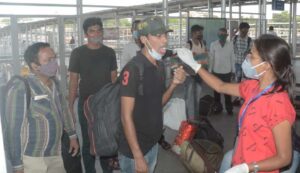 The way out of the crisis
The way out of the crisis
Immediate measures are required to be taken to reduce the transmission of SARS-Cov-2 virus. One option is complete lockdown of the whole country for a considerable time with a livelihood plan for the poor people — such as labourers, migrant workers, daily wage workers, etc — who are dependent upon daily earning for their livelihood. The Union and state government together should take the responsibility for their livelihoods. People must be explained as to what’s happening and what is required to control this pandemic. All religious places and festivals involving mass gatherings should be stopped immediately to prevent mass transmission. No political rallies should be permitted till majority of the people are vaccinated.
The Government should implement the vaccination program and take it to the logical conclusion. According to Centre for Disease Control (CDC), USA all those, who have been vaccinated, are not only protected from the infection but they are also less likely to infect others. Vaccination should be done in campaign mode, not just in urban but also in rural population which consist 70% of our country’s population. More affected districts should be prioritised. The Government of India already has a system in place whereby local and primary health centres take care of Universal Immunization Programme (UIP). The same health centres can be utilised for the COVID vaccination.
Our medical scientists/expert groups should perform genome sequencing and do its detailed analysis to understand and figure out the order of DNA nucleotides, or bases, in a genome to trace, track and control emerging and more transmissible SARS CoV-2 mutant variants.
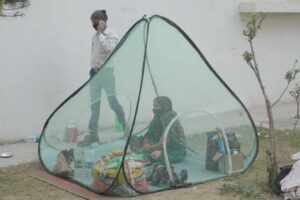 Masks, social distancing, restricting mass gathering, voluntary quarantine and testing should be implemented universally. N95 masks and other masks, made of two or more layers of washable and breathable fabrics may be promoted to be used. People must ensure that they use the masks that completely cover the nose and mouth and fit snugly, so that face is completely covered leaving no gaps. Surgical masks should be preferred by those serving and catering to COVID-19 patients. There should be proper provision of air circulation while using air conditioning rooms for COVID-19 patients.
Masks, social distancing, restricting mass gathering, voluntary quarantine and testing should be implemented universally. N95 masks and other masks, made of two or more layers of washable and breathable fabrics may be promoted to be used. People must ensure that they use the masks that completely cover the nose and mouth and fit snugly, so that face is completely covered leaving no gaps. Surgical masks should be preferred by those serving and catering to COVID-19 patients. There should be proper provision of air circulation while using air conditioning rooms for COVID-19 patients.
People should be allowed to travel only after they have taken vaccinate doses. The vaccinated population should not require to undergo COVID testing before and after travel and need not be quarantined unless specifically required by the local and state administrations. Any unvaccinated person travelling should be tested for COVID-19 before and after traveling and they should be quarantined for 10 days post travel. Once infected patients recover, then they may develop immunity but the duration of immunity is not known. At present, it is recommended that everyone who has been vaccinated or who has been infected should continue to wear mask, practise physical distancing and avoid visiting crowded places.
There has been an increasing number of COVID-19 patients in rural areas. Gram Panchayats must be involved to tackle the COVID -19 pandemic. Mobile vans equipped with testing facility and medical health kits should be made available at village levels. Families in villages having COVID positive members should be provided with kits consisting of essential medicines and oximeters. It is important that health volunteers must be sensitized to know the oxygen level to understand the severity of infections. For this purpose, ASHA, Anganwadi and auxiliary nurse midwife (ANMs) workers must be involved.
Besides the above measures, adequate supply of oxygen, medical kits for COVID-19, medicine, medical and paramedical staffs, sufficient hospital beds and ICU beds with ventilators should be arranged on a priority basis.
Before discussing the long-term plan for health system, it is necessary to understand the importance of health for a nation. Healthcare is a pre-requisite for peace, stability and security of the country. It would not be a wrong to state that wealth of a nation lies in the health of the nation. Its importance was realised long back by our Constitution’s authors and architects of the nation. Though our Constitution has put ‘health’ under a State subject but there are aspects of health that fall under the Union and Concurrent lists. A healthy individual is an asset to the community while a sick person is a liability. Health is as important as Defence to secure the nation. Defence investment can provide political security while investments in healthcare would provide economic as well as political security. So, it makes a compelling case for policy makers and politicians to invest in better health care.
Our Union and state governments are cumulatively spending a paltry 1.7 to 1.8 % of GDP whereas USA and UK spend nearly 17% and 9.4% on health respectively. So, time has come that the Union government increases it budgetary allocation for Health sector and mandatorily spends to the tune of at least 5% of GDP till the gap in health system is plugged.
To attain the WHO’s goal of ‘Health for All’, we not only need water, nutrition, sanitation, health awareness and a stable source of income but also a system that not only treats the diseases but also prevents them early. We need a pre-emptive, comprehensive, holistic, and coordinated healthcare approach at primary, secondary and tertiary levels. Health system of the country needs to be regulated by Clinical Establishment Act in letter and spirit.
As we stand at crossroads, India needs a radical change in its approach. We need to go beyond disease control to population’s health. It means revolutionary change in our thinking and approach. It’s time to make revolutionary innovations in healthcare system.
 Dissecting the Virus
Dissecting the Virus
COVID-19 is an infectious disease caused by the SARS-CoV-2 virus. The World Health Organization first learnt of this new virus on December 31, 2019 following report of viral pneumonia in a Wuhan cluster in Peoples Republic of China. The virus spreads via close inter-personal contact. This happens to people who are in close contact with an infected person.
Airborne transmission via aerosol formation is considered the most common mode of transmission. It is usually transmitted through droplet infection. An asymptomatic person infected with coronavirus may produce aerosols while they talk, breath, cough or sneeze. Aerosols are infected particles that can float and stay airborne for 3 to 4 hours. The virus can also contaminate surfaces and can be transmitted by touching with hand and then by touching their nose, mouth or eyes. The risk of aerosol transmission with contaminated surface is low and so is the case with faecal or vaginal, anal or oral intercourse route.
(The author is ex-DG, Health Services, Government of India)
